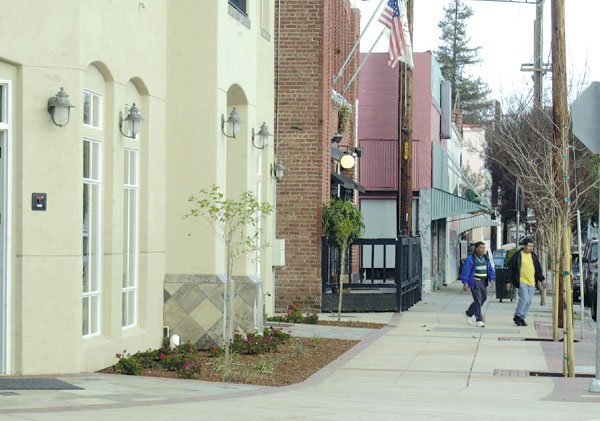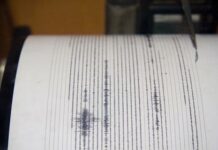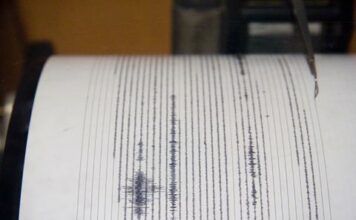GILROY
– Expanding a key downtown streetscape improvement project from
Monterey Street to include portions of nearby side streets would
cost the city roughly $4.6 million – or potentially a third more
than it would cost to finish unfunded improvements down the length
of Monterey itself between Leavesle
y and 10th streets, according to a preliminary analysis by city
staff.
City Council requested the analysis during a recent series of
study sessions on downtown revitalization. And deciding whether to
expand the cost and scope
– and potential benefits – of the program by going down the side
streets will be an added factor in a major policy decision they
already face later this spring: how to find the money to fund even
the Monterey Street portions of the project at all.
GILROY – Expanding a key downtown streetscape improvement project from Monterey Street to include portions of nearby side streets would cost the city roughly $4.6 million – or potentially a third more than it would cost to finish unfunded improvements down the length of Monterey itself between Leavesley and 10th streets, according to a preliminary analysis by city staff.
City Council requested the analysis during a recent series of study sessions on downtown revitalization. And deciding whether to expand the cost and scope – and potential benefits – of the program by going down the side streets will be an added factor in a major policy decision they already face later this spring: how to find the money to fund even the Monterey Street portions of the project at all.
The city has made some progress on the streetscape plan, completing roughly $2 million in renovations on Monterey Street between Seventh and Eighth streets with the help of a state grant and landing another $1.4 million from the state for an estimated $1.6 million of work between Sixth and Seventh streets that’s due to go out to bid within the next couple of months. But the city is still looking for money to complete the rest of the program, which many downtown leaders think is crucial to improve conditions and appearance for shoppers in the area and provide incentives to spark further investment by developers and property owners.
Not counting the side streets or the work that’s already done or budgeted, finishing streetscape improvements along the rest of Monterey Street between First and Tenth – including a new, landscaped center median, wider, patterned sidewalks, new street trees and lampposts – is estimated at $12.3 million, according to a cost summary prepared by city engineers.
By keeping the sidewalks between First and Fourth streets their current 10-foot width and avoiding the median work there, the total cost would be a little less at $10.8 million, according to the report. In both cases, the block from First Street to Leavesley Road would not include the landscaped median or widened sidewalks.
Meanwhile, it would cost approximately $4,660,560 to fund a total package of side-street enhancements, which would extend improvements such as the patterned sidewalks, street trees and new streetlights – but not the landscaped medians – in varying lengths off Monterey Street itself down each side street from Second Street south to Ninth Street.
Improvements between Second and Third streets – including a decorative patterned sidewalk of existing width, new street trees and new streetlights running west to Eigleberry Street and east to the railroad tracks – are estimated at roughly $1.22 million.
Running a similar package of improvements between Eigleberry and the train tracks along Fourth, Fifth, Sixth and Seventh streets is estimated at $2.8 million. Eigleberry and the tracks are seen as natural transitions to different land uses, according to the staff report.
Side-street improvements from Eighth to Ninth streets would be more limited in scope – running roughly a half-block on the west side to the Gourmet Alley – and cost roughly $598,000. No eastern-street improvements are identified because of the Caltrain depot and the Valley Transportation Authority parking lot, engineers said.
The side-street enhancements begin at Second Street because businesses south of the area are more conducive to foot traffic, according to the staff report.
“Businesses along First Street and Howson Street are more of a vehicle-destination type of business,” the report says. Side-street improvements were not included along Tenth Street for similar reasons, according to the report.
A discussion on the ultimate, tough question – how to finance any of the improvements – has been delayed until at least spring when more solid budgetary figures are due out.
While the city has had success with grants for initial phases of the program, officials say they’re less likely to land similar large grants in the future – and there is no funding allocated for the next phases of the plan.
Meanwhile, city officials have said funds are already tight or nonexistent to fund increasing employee costs or planned expanded emergency services – let alone the money needed to bond for capital projects like the streetscape project.
The streetscape project also would have to compete with millions of dollars in other unfunded capital projects, including up to $4 million in sidewalk repairs, more than $9 million in street repairs and $18 million in repairs and improvements to crumbling storm drains.















